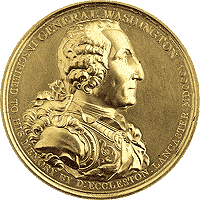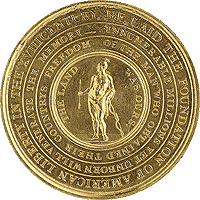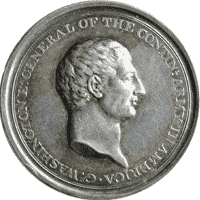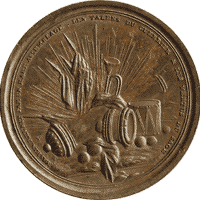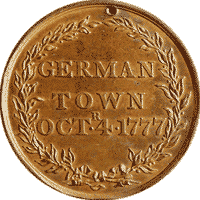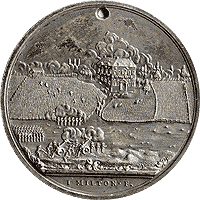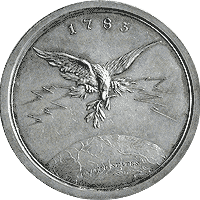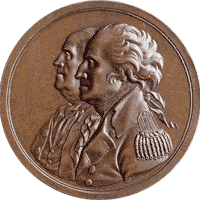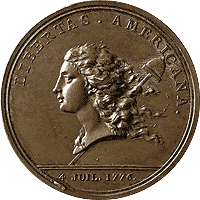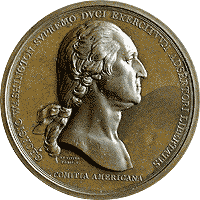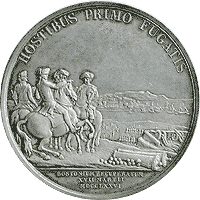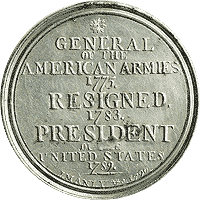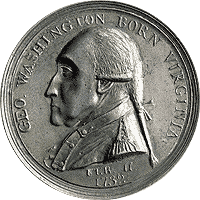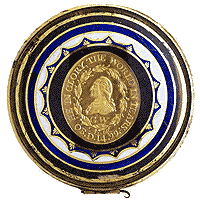Enduring Images of War
By J. Hunter Barbour
Photos by Tom Green
DEPICTED IN THIS photographic essay are rare and precious representations of George Washington, as well as selected events associated with his service to America, chosen from the collection of Joseph R. Lasser of Scarsdale, New York. Each is a commemorative medal or medallion struck between 1778 and 1808, most to celebrate a man and his life, as well as the emergence of his nation.
To the right are the obverse and reverse of the fire-gilt Eccleston Medal, made by an English Quaker in 1805, six years after Washington's death. Lasser, a leading collector and authority, knows of but one example.
Lasser permitted Colonial Williamsburg to borrow and photograph these prized, seldom-seen, antique examples of the art and mystery of metalwork in the summer of 2002. Produced in small quantities in America or abroad of gold, silver, copper, and bronze, these tokens of fame were fashioned as much from sentiment as they were from metal. Most are early examples of the urge to honor Washington by coining his image, an urge that gained strength through the centuries.
Except for Abraham Lincoln's, the likeness of no American is today more often reproduced in metallic bas relief than Washington's. In 2001, the most recent year at this writing for which complete figures are published, the United States Mint produced 4.3 billion twenty-five-cent pieces bearing the visage of the master of Mount Vernon. The Illinois Rail Splitter appeared on 10.3 billion pennies.
To digress a bit in the interest of perspective, the Bureau of Engraving and Printing turned out more than 5.1 billion of Washington's dollar bills that year compared with about 979 million of Lincoln's fivers. Taken at face value, "then about $6.2 billion worth of Washington's to $5 billion worth of Lincoln's" the profile of the Father of Our Country is yet the most prominent in our everyday life.
It is better than even money, in any case, that the countenance of no hero of the federal republic was sooner struck in metal than the patriot who was first in war, and first in peace, and first in the hearts of his countrymen. Below are some of the leading examples.
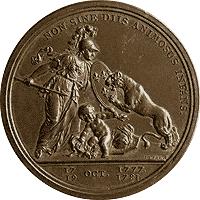
Above is a bronze medal struck in Paris in 1783 and presented to ambassadors to France Franklin and Thomas Jefferson, delegates to the peace conference, and some congressmen. The reverse metaphorically celebrates the American victories at Saratoga and Yorktown. Lasser says that fewer than thirty silver versions of the medal can be confirmed today. Click image to view enlarged medal in bronze.

